Birth Waiting Rooms, a boon for tribal pregnant women from far located agency villages in Telangana
By S. Harpal Singh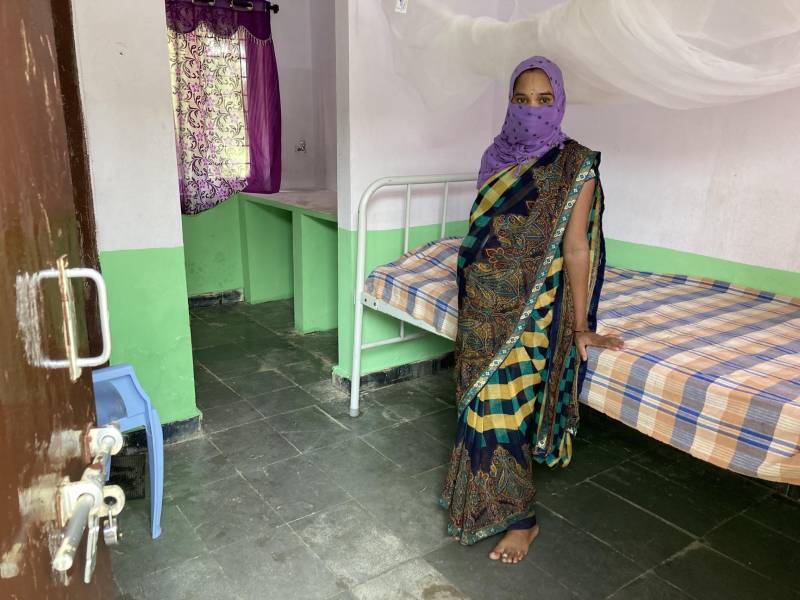
A wave of extreme pain ran through the body of the pregnant Kondra Shankaramma with every thud of the iron wheels of the bullock cart carrying her made over the rocks that filled the slushy rut. The bullock cart needed to be slowed down very often notwithstanding the condition of the nine-month pregnant woman from Somini in Bejjur mandal of Kumram Bheem Asifabad district.
The woes of the hapless woman increased as the local stream suddenly came in spate due to the heavy rainfall and Shankaramma had to be carried physically by villagers across the fast-flowing water. With great difficulty, she was shifted to an autorickshaw but delivered the baby in the auto itself, before she reached the primary health centre (PHC) a few km away.
This incident took place in July 2019 and is not an isolated one. Such incidents recur every monsoon in the far-flung areas, mostly in villages and habitations located in the hilly Scheduled area of former united Adilabad district. Not all pregnant women who need to be shifted to hospitals are as lucky as the Bejjur woman. Several of them had died in the past while trying to reach the nearest PHC or other hospitals from those habitations which have remained inaccessible even to ambulance service owing to bad roads or simply lack of a road.

A pregnant woman who had travelled to the main road in abullock cart being shifted to an ambulance
The situation is particularly bad the rainy season when even one short spell of heavy rainfall invariably brings floods in the local hill streams. The average normal rainfall for old united Adilabad district is a high of 110 cm during monsoon and more number of years have experienced rainfall in excess of this.
As many as five maternal deaths have been reported between April 2019 and March 2020, and two more in this financial year, the cause of death in some of these being delay in reaching the hospital. There have been deaths of mother and child too in some cases though there are no official statistics being maintained with regard to this.
This year, the scenario turned more dismal for the vulnerable tribal women thanks to the COVID-19 threat. As the coronavirus infection began spreading through hospitals, the danger of pregnant women getting exposed to it got real. The circumstances did warrant some special scheme to be put in place to save the lives of poor pregnant tribal women who also faced additional risk due to their anaemic condition, a condition that is almost uniformly seen among the women from aboriginal tribes.
The Integrated Tribal Development Agency (ITDA), Utnoor, the nodal agency for all development in the tribal belt of former composite Adilabad district, has risen up to the occasion. It has come up with simple and logical scheme to provide needed help to the pregnant women and it is called Birth Waiting Rooms.
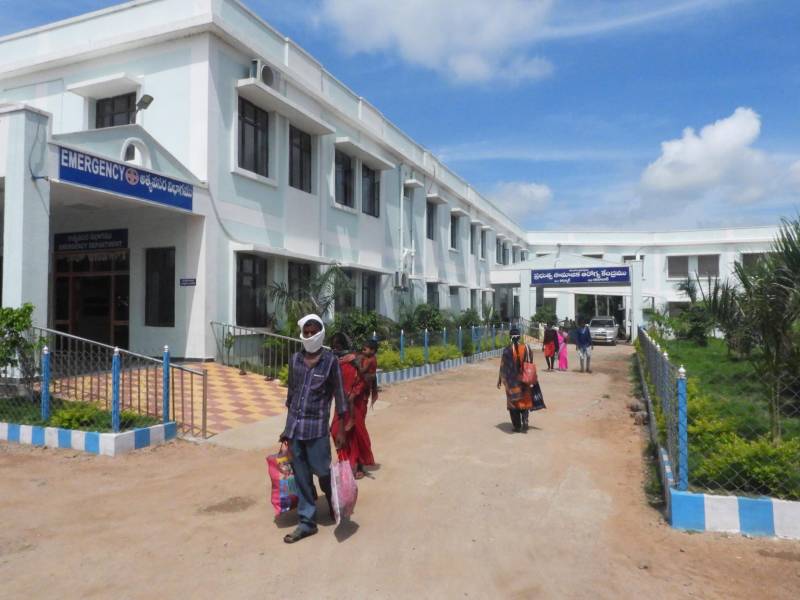
The Utnoor Community Health Centre
"The Birth Waiting Rooms, there are four of them at the Utnoor Community Health Centre, are single bed rooms meant to accommodate pregnant women who are expecting to deliver within 10 or 15 days. The rooms serve to isolate the vulnerable pregnant women and the new born to protect them from COVID-19 during their stay before and after the delivery besides allowing us to provide all possible care," asserted Dr. Kudmetha Manohar, the Deputy District Medical and Health Officer for Agency areas who looks after the operation of the scheme.
The waiting rooms are structures that have been renovated at a cost of Rs. 3 lakh. Each of the four rooms has a bed with mosquito net and attached toilet. There is enough space outside the rooms for attendants to while away their time. In fact, the ITDA has even given a TV set for them and purified drinking water etc. The patient and her attendant is provisioned to stay for five days even after delivery. This will take care
of all the necessary attention that the lactating mother requires.
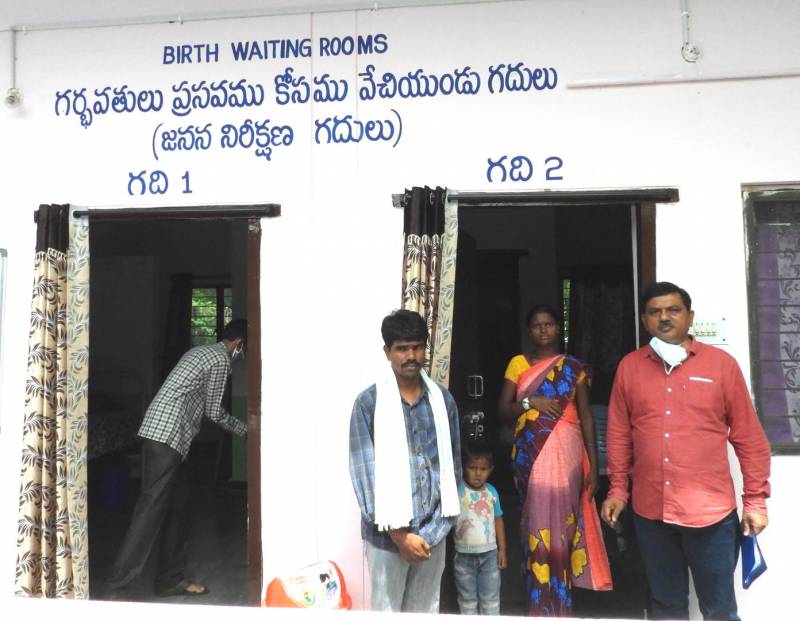
Dr. Kudmetha Manohar with the pregnant Sarala Laxmi at the Birth Waiting Rooms before her delivery
"We started with identifying the inaccessible villages, which were categorised as high risk villages, besides identifying pregnant women and the month wise expected date of delivery of each one of them. We could identify 70 high risk villages under the 17 PHCs under the ITDA where even ambulance cannot reach and patients need to reach concerned PHC on foot," Dr. Manohar revealed of the initial days of
the operation as monsoon season began.
According to statistics, a total 278 pregnant women are expecting to deliver during the remaining of this year from villages within the jurisdiction of the 17 PHCs in the agency area. As many as 34 of these women come from high risk villages and we are motivating each one of them to come here for delivery well in advance.

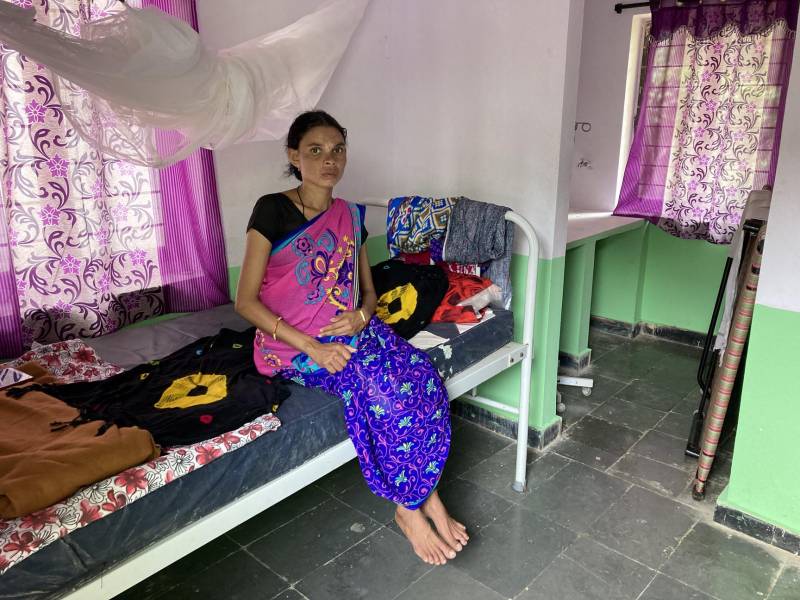
Birth Waiting Rooms current inmates Kova Turpabai & K. Nirmal respectively)
Pregnant women identified as most needy of health support are shifted to the Birth Waiting Rooms at least 10 days before the expected date of delivery. There is provision for one attendant to stay within the hospital premises.
"The first thing that is taken care of in a pregnant inmate of Birth Waiting Rooms is anaemia which has played havoc with the lives of women from ethnic tribes. In order to increase the haemoglobin content in the blood we are giving a supplementary diet comprising of laddus made of ippa or mahua (Madhuca indica) flowers and palli patti or chikki, a savoury consisting of jaggery and peanuts," the Deputy DMHO,
who himself hails from an indigenous tribe, pointed out.
The diet also consists of fruits worth Rs. 50 every day. Besides, the hospital supplies toiletries. "I am quite comfortable here," Sarala Laxmi of Devnagaram under Hasnapur PHC, the first inmate of Birth Waiting Rooms, had observed when NewsMeter had interviewed her before delivery but her eyes had betrayed her fear out of the strange feeling of staying in an unknown place for the duration. The woman has given birth to a baby girl on July 28 and the damily has named her Rishika.
"We did the right thing in getting admitted to the hospital," her husband Narsaiah told this reporter at his residence. The family even showed the KCR kit which consists of clothes, baby soaps, baby oil, baby powder, mosquito net, toys, diapers etc.
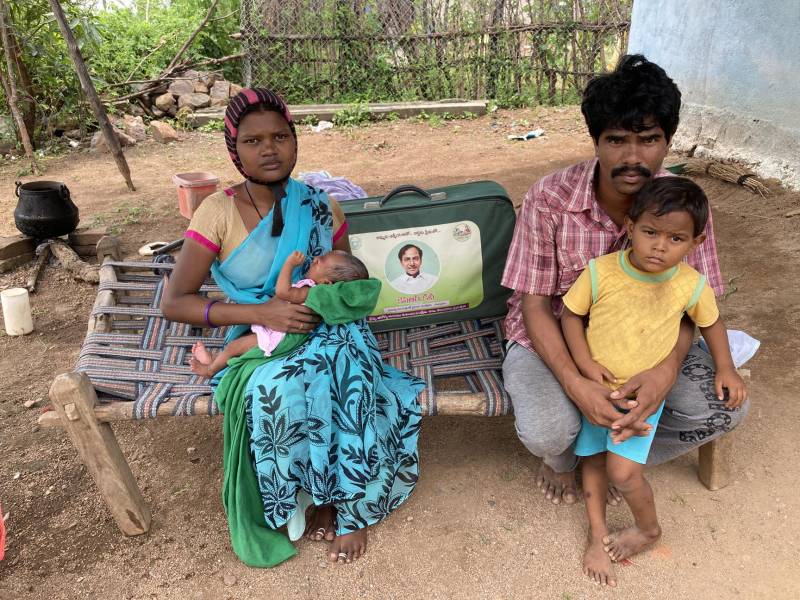
Sarala Laxmi with the new born baby girl at her residence
"The stay in the Birth Waiting Rooms has improved her haemoglobin content too. She had 3.5 grammes of haemoglobin at the time of admission and 9 gms at the time of her discharge from the hospital," disclosed Bukka Venkateshwarlu, Assistant Medical Officer at Utnoor CHC as he talked of the success of the initiative of the ITDA.
So far, nine women have been admitted to the Birth Waiting Rooms, seven of whom have experienced healthy deliveries. Two women,K. Nirmala and Kova Turpabai are currently lodged in the rooms. The women were brought to the rooms in August as heavy rainfall lashed the district. "We feel much comfortable and safe here," opined Nirmala, summing up for even for Turpabai, after a few days of stay.
This story has been published as part of the Internews Information Saves Lives: Rapid Response Fund project to NewsMeter.